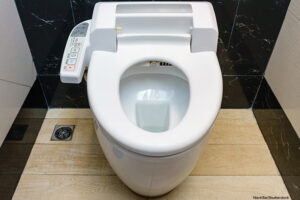
The Bright Side of Quarantine
No doubt about it: the self-quarantining and shutdowns resulting from the worldwide coronavirus outbreak have caused a lot of stress. Some experts worry about the effect widespread business closures will have on the economy in the long run; others are concerned about the psychological effects of social isolation. But there is one potentially positive outcome from our “new normal”: cleaner air and water.
Take, for example, the famous canals of Venice, Italy. They are usually pretty murky, but now, without boat traffic, they are much clearer. (Scientists disagree about whether this is the result of less pollution or the fact that boats aren’t churning up the water so all the sediment can settle to the bottom.) Swans have also reappeared. In China, where industrial activity has been largely shut down and transportation restricted, the air quality has noticeably improved, with a drop in harmful contaminants such as carbon dioxide and nitrogen dioxide.
What’s especially remarkable about these changes is how quickly they have happened. It took only four weeks for China’s carbon dioxide emissions to drop 25 percent. Other air pollutant levels dropped noticeably in only two weeks. Here in the United States, San Francisco (which is under a shelter-in-place order) has already experienced a 40 percent drop in particulate matter (fine particles) in the air, while Seattle has seen a 32 percent drop and New York City has seen a 28 percent drop in the same short period of time. But scientists are quick to remind us that these positive effects are only temporary. Levels will return to their same high level after the virus outbreak has passed unless we are willing to make more permanent changes.
Dig Deeper Environmental scientists agree that if we come together to fight climate change the same way we have the coronavirus outbreak, it could cause a significant ecological improvement. Think of at least three things you are doing now that you could continue doing after the outbreak has passed, which would have a positive impact on the environment
“Woman’s Hand”
When you were young, did you ever invent a secret language that only you and your friends could understand? Throughout history, people have been communicating with each other in code. One such code is the Japanese kana script. Translated to mean “woman’s hand,” it was invented in the ninth century by a priest and Sanskrit scholar named Kukai, and was used primarily by and for women as a way for them to communicate with each other. In ancient Japan, most people couldn’t read or write. Those who could were men, and it was considered improper for a woman to be literate. So women used kana as a secret way to write everything from diary entries to love letters.
Before kana, virtually everything written in Japanese was written by men. But the development of kana changed that. “The Tale of Genji,” which is often considered to be the world’s first novel, was written by a woman named Murasaki Shikibu in kana script. And an anthology of poetry published in 1237 featured 21 female poets. In many ways, medieval women were freer and more liberated than women in modern times, and they used kana to write openly about their feelings and activities. Eventually, however, their role in society began to change and women were expected to be more domestic, and the use of kana among women fell away.
While the kana characters represent the basic sounds of the Japanese language and form the basis for the present-day written language, only 46 of the more than 300 original characters are used today. Kana characters are longer and more flowing, with extra space in between them. A few scholars and calligraphers are responsible for preserving the language to pass on to future generations.
Dig Deeper Where did the Japanese language originate from? Use Internet resources to help you figure out the answer.
New Challenges with the 2020 Census
With all that’s happening in the news right now, it’s hard to remember that the 2020 census is vitally important. But it is. The census count is used to determine everything from a community’s representation in Congress to the amount of federal funding it receives from social services. And because it only happens once every ten years, an incorrect headcount now could negatively impact a community for the next decade.
This year’s census is seeing some important changes. Starting now, and running through July 31, U.S. residents will go online to complete the census, rather than filling it out via pen and paper as in years past. It’s hoped that this will be a more efficient and resource-responsible way to get a count. (Paper copies will still be provided to households without internet access; if you haven’t filled out your census online by later this month, a paper copy will be mailed to you.) However, some are concerned about possible cybersecurity threats. Just a few years ago, for example, Australia’s system crashed when it tried to complete its first-ever online census. And there is always the concern that important personal data could get hacked.
The U.S. Census Bureau says that it is ready for these challenges. If the system crashes, the Bureau has printed enough paper copies for every household in the United States. Data is also backed up in multiple places in case of a cybersecurity hack, and federal intelligence agencies are monitoring the system regularly for any possible breaches. In addition, there are backup systems in place in case too many people try to visit the site at once, which could otherwise cause slowdowns or shutdowns.
What Do You Think? This year’s census is expected to cost about $15.6 billion. Why do you think it is so expensive? In your opinion, is it worth the cost?
Toilets Around the World
The coronavirus outbreak in the United States has Americans thinking about something they probably took for granted before: toilet paper. And while we stand in long lines and pay a premium for the stuff, it’s important to remember that other countries don’t think toilet paper is important at all. In fact, restroom–er, equipment–varies widely from place to place. And when it comes to the toilet, the United States might be on the losing end of things.

Take, for example, Japan, which has water-efficient toilets with dryers and heated seats. High-tech versions may even include features such as the ability to clean themselves, deodorize the air, and play white noise or music. And none of this is new; a Japanese company called Toto developed the first electric toilet seat (with a built-in bidet) in 1980. These technologies have been made available in the United States, but have never taken off. Why? It could be simply a matter of cultural differences. While hygiene and cleanliness are vital parts of Japanese culture, this isn’t understood the same way for Americans. Japanese families may be willing to pay huge sums of money for high-tech, state of the art toilets, but Americans are probably not. That means that for now, at least in the United States, the porcelain bowl is probably here to stay.
